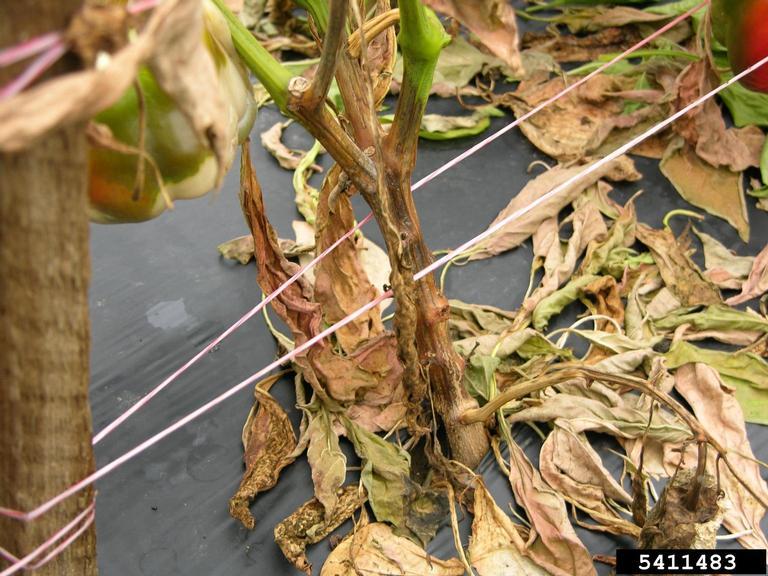Phytophthora blight plagues peppers and melons
The hot wet weather this summer has been the perfect conditions for Phytophthora blight of vegetables. I know of at least one urban farm where this vegetable disease has been confirmed by the University of Maryland Plant Diagnostic Lab.
Vegetables in the squash family and the tomato/pepper/eggplant family are particularly prone to infection with Phytophthora blight. This disease is particularly destructive and difficult to manage.
What symptoms to watch for: Watch for suddenly wilting plants in wet fields or beds, with brown plant stems at the soil surface and soft, rotting fruit.

How to manage the disease
- Confirm your diagnosis: If you suspect you have Phytophthora blight, seek help confirming the diagnosis.
- Gardeners: Upload photos to Ask Extension: https://go.umd.edu/askextension
- Farmers: Submit a sample to UMD’s Plant Diagnostic Lab: https://go.umd.edu/plantlab
- Protect your healthy beds. Avoid tracking soil from an infected bed into a clean area. Clean harvesting and weeding tools well.
- Promote good drainage. Avoid overwatering, use raised beds where possible.
- Plant disease-resistant varieties. Here is a list of phytophthora-resistant pepper varieties: https://go.umd.edu/peppervarieties
- Remove infected plants. Put them in the trash or bury them far from your growing area. Do not put in compost that will go back onto the farm.
- Rotate crops. In a bed where you have had Phytophthora, avoid cucurbit crops and solanaceous crops for the next three years.
- Chemical management can be used in conjunction with the above practices. Several fungicides are labeled for Phytophthora blight on vegetable crops. Consult the Mid-Atlantic Commercial Vegetable Recommendation Guide for a list of products and application methods. Always read and follow the label prior to any pesticide applications.
Citations and additional reading:
- Grabowski, M. (2018). Phytophthora blight. University of Minnesota Extension. https://extension.umn.edu/diseases/phytophthora-blight
- Koike, S. T., Gladders, P., & Paulus, A. O. (2007). Vegetable Diseases: A Color Handbook. Taylor & Francis. pp. 206-208 and pp. 243-244.
- McGrath, M. T. (n.d.). Pepper varieties resistant to Phytophthora blight and bacterial spot. Cornell University Cooperative Extension Vegetables. https://www.vegetables.cornell.edu/pest-management/disease-factsheets/disease-resistant-vegetable-varieties/pepper-varieties-resistant-to-phytophthora-blight-and-bacterial-leaf-spot/
- Scheufele, S., & Higgins, G. (2016). Phytophthora blight. University of Massachusetts Amherst Extension Vegetable Program. https://ag.umass.edu/vegetable/fact-sheets/phytophthora-blight
- Sudermann, M. (n.d.). Phytophthora blight. Cornell University Cooperative Extension Vegetables. https://www.vegetables.cornell.edu/pest-management/disease-factsheets/phytophthora-blight/
- Wyenandt, A., Vuuren, M. van, Kuhar, T., Hamilton, G., Hastings, P., VanGessel, M., & Johnson, G. (2020). Mid-Atlantic Commercial Vegetable Production Recommendations. https://njaes.rutgers.edu/pubs/publication.php?pid=e001
This article appears on September 9, 2021, Volume 12, Issue 6 of the Vegetable and Fruit News